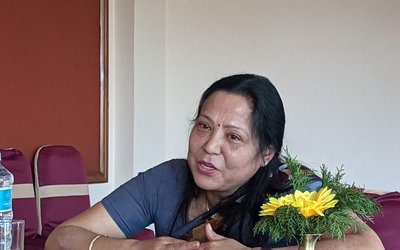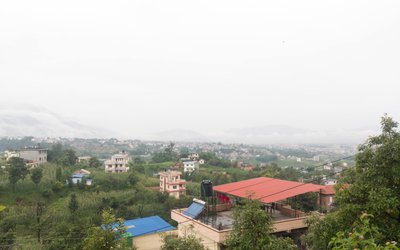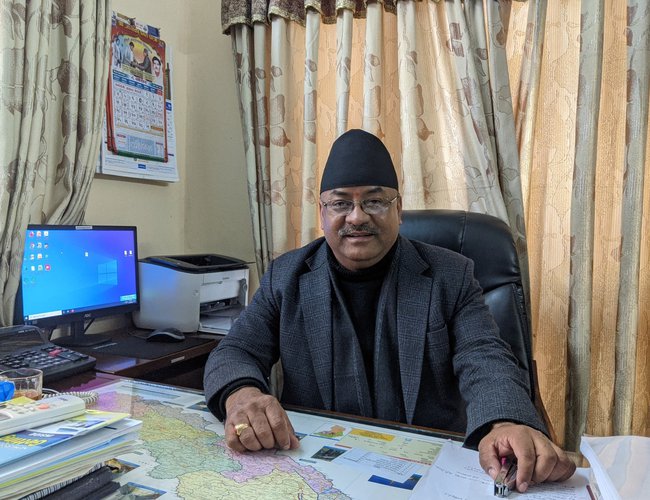
You have started observation since 1991 when the numbers of observers were few. How do you see the state of elections observation now?
As with all other sectors, the election observations area has also seen a sea-change in terms of numbers, quality and capacity of the observer. When we started elections observation in 1991, it was the first election after the restoration of democracy. There were a few hundred observers. However, 8000 observers monitored the elections this time. The observers were selected fulfilling certain criteria like age (above 18), 10+2 pass qualification and being politically neutral.
What are the differences you have observed among the political parties, voters and candidates?
In 1991, political leaders, candidates and voters believed in principle and conscience. They were respectful of laws, the constitution and political ideology and principles of democracy. In other words, they were highly disciplined. The government was committed to holding free and fair elections as was the elections commission. No one thought about the election fraud and booth capturing. In 1991, sitting prime minister Krishna Prasad Bhattarai lost the elections. He accepted it as a normal practice. This is not the case now. Political leaders are not in a position to accept the defeat.
Have you seen any changes in the election campaign?
The style of elections campaign has drastically changed over the years. With the upsurge of social media and electronic media, political parties and candidates are focusing their campaign messaging through these media. Wall postering, distributing of pamphlets, door-to-door meetings and mass rallies are getting fewer compared to the early days of elections. However, hosting a feast and tea parties are still common in rural areas. The first general and local level elections held in 1991 and 1993 were very normal in terms of campaign cost. After 1994 elections, political parties started to compete for power rather than ideology. Thus, there was the realization of the need for election observers. The number of observers started to increase from then onwards. In the local elections of 1997, the numbers of candidates and observers both increased. Similarly, candidates and political parties also began to spend more money in the election. The cost to contest the elections had gone up in the 1998 general elections. Candidates confided that they had spent a lot of money during the elections. They reported that the voters started to ask money for their vote.
What is the state of elections after the first Constituent Assembly?
After the political change following the People’s Movement of 2006, Maoist and seven political parties signed the Comprehensive Peace Agreement (CPA. As per the agreement, the first Constituent Assembly election was held in 2008 May. During the first elections, the Maoist party contested the elections blocking candidates of other parties. In rural areas, Maoists had monopolized the elections.
What was the role of Nepal’s development partners?
During the first CA elections, Nepal’s development partners had shown great interest in the elections. They also funded heavily to ensure the elections are free and fair by supporting many national and international observer groups. Around 50 donor countries backed the elections and provided around 15 to 20 billion rupees to ensure free and fair elections. In the elections, 153 observer groups received permission and 64,000 observers were mobilized. Even former U.S. President Jimmy Carter himself came to Nepal and led the international election observation team. Over 500 foreign elections observers came to Nepal representing 13 different organizations.
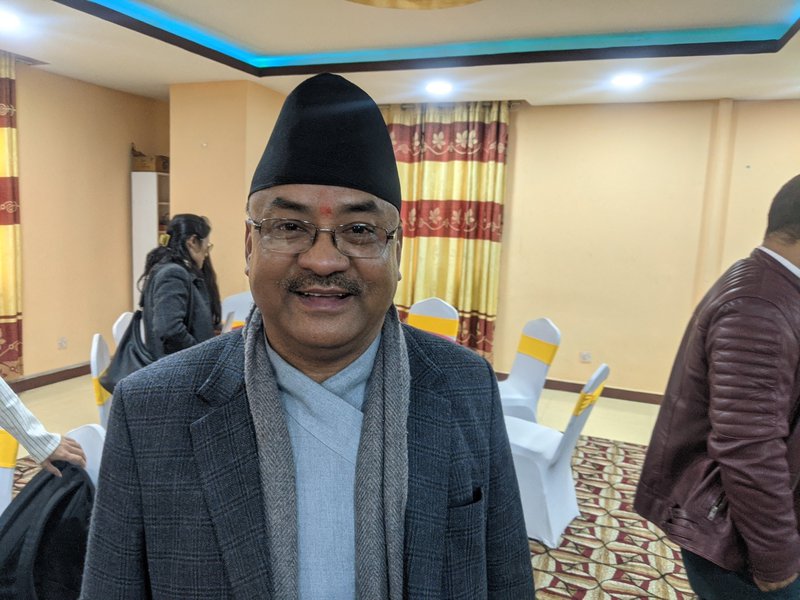
How were the modalities of observation back then?
The modality of the elections observations of the first CA election was different because it was held under a larger international interest. Even UNMIN was there to monitor the elections. Due to CPA, Nepal Army and Nepal Police maintained a passive presence and the Maoists controlled the rural and interior parts of Nepal. It was very difficult to observe the elections due to safety reasons. Many candidates even filed nomination paper from Kathmandu due to the threat of the rebel Maoist cadre. With the decision of the Election Commission, many candidates filed nomination papers through fax.
How was the situation in the second CA elections?
The second Constituent Assembly elections were held in November 2013. The election was drastically different than the first one as the Maoists had already joined mainstream politics and laid down their arms. The environment was much more conducive to peaceful elections. Election Commission had also started to raise questions about the quality of observers in terms of age and qualification, and neutrality. Along with the GEOC, NEOC and Dean, there were 153 observer groups that had secured the permission. However, only a dozen of organizations were active.
How do you see the quality of observers and what steps the Election Commission has been taking to improve the quality and neutrality of observers?
Following the growing disputes over the quality and impartiality of the observers, the Elections Commission announced the observer Code of Conduct. Under the revised Code of Conduct, the commission has fixed the basic qualification, age limit and experiences and to ensure they are politically impartial. After this new reform, there was more maturity in election observers. During the early days, there were complaints that the observers were party workers and party workers were observers. During the local and national elections of 2017, election observers and observer organizations became more mature.
What are your impressions on recently held two recent elections?
So far as the local and national elections of 2022 are concerned, national observers have become more matured and capable. In the last local elections, only 36 observer organizations got permission. However, out of 36, only 7 observer groups were able to secure international funding. There were only 5000 observers.
How much funding observer groups are getting now?
International concerns over Nepal’s elections are gradually declining. There is a major gap in the funding. Following the objections raised by the Nepal government and the Elections Commission on the observation report presented by the European Union’s observer team in the election of 2017, European Union stopped sending its observer mission to Nepal. EU has stopped the funding and disassociated from the process. Now only USAID is providing support to observer groups and the amount is very small. Because of the lack of resources, only 8000 observers were mobilized in the recently concluded national elections. There were 44 national elections observer groups with only two international observer groups with less than 10 observers. Due to a lack of funding, the number of national and international election observer organizations has drastically fallen.
How do you see the capacity of the Elections Commission?
The Election Commission has already improved its organizational capacity and it is also getting more mature compared to last time in holding free and fair elections. EC has gradually changed and reformed the election process as suggested by the observer groups.
What kind of reforms have taken place?
The commission has already made reforms in the candidate nominations, registration, voter list, counting and boxes and another method of counting. The improvement in the procedures including the new code of conduct helped ensure free and fair elections. EC is getting further matured. As per observers’ recommendations on candidate expenditure and unnecessary use of resources by the candidates, the EC has built a strong mechanism to control them. In the past, the observer group used to raise many questions on the ballot box, seals and representatives of the candidates and polling officers' neutrality. With the implementation of our suggestions, EC has already transformed itself into a strong institution. There are certain issues still there like sealed ballot boxes and transparency in counting.
How do you suggest making the election better?
Now the time has come to use electronic voting so that the cancellation of the vote comes to zero and there is fast counting. This is the best way to prevent fraud. If political parties believe in the process, they have to go for electronic voting.
How was the state of pre-election atmosphere?
Except for some sporadic incidents, we can say that the second elections of the House of Representatives and Provincial Legislature were held in a free and fair manner. Observing all the preparations and management, observers have very little to say about the process. However, Election Commission still needs to take reforms in vote counting and ballot box transportation. There needs to be reform in vote counting. We will release the report after the completion of the entire process.
What are your own experiences in managing observer groups during the elections?
In the elections, 44 national and 2 international observer groups observed the elections for the House of Representatives and Provincial Assembly. There were nearly 8000 observers mobilized on election day. Having experiences of observing the elections, our observers include foreign chief justices, former chief election commissioners, media groups, women groups, Dalit and indigenous groups and other civil society. We released our pre-elections environment report in presence of national and district-level observers of GEOC, and representatives from NEOC, EOC, Insec, Sankalpa, Anagalo, Women NGO Federation, YFD and media. This wider and more inclusive representation is our strength to ensure observation is free and fair.
How do you see the EC’s role?
Compared to previous elections, Election Commission, Nepal Government, security agencies other stakeholders worked well. Learning from the past, the Election commission has made good progress in collecting voter lists, candidate registration, implementing codes of conduct, security arrangement, ballot paper, ballot boxes, voting booths, management of employees and others.
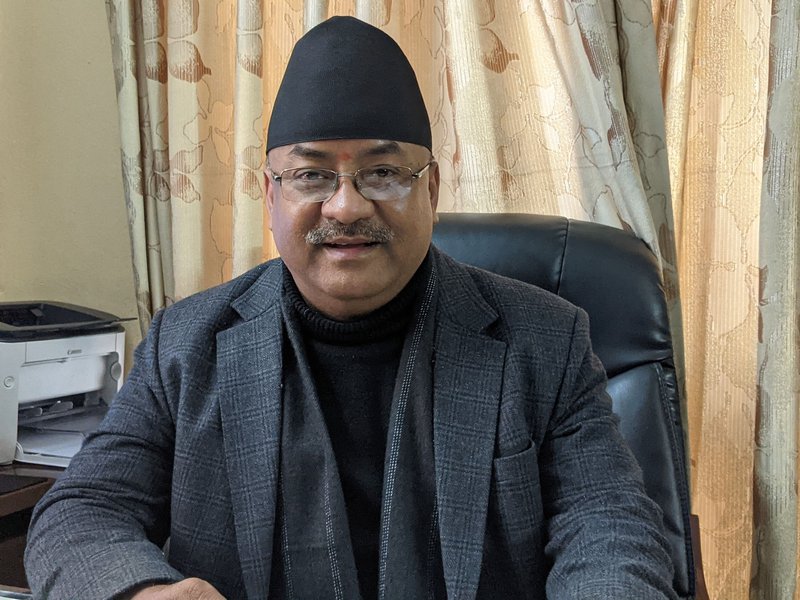
How many districts did the GEOC observers cover?
GEOC mobilized 331 observers in 261 Municipalities of 36 districts. Our observers have been closely monitoring the elections process since the publication of the voter list, candidates’ registration and till the silent period, and also on the polling day and beyond. Our report is based on the observation of observers deployed in those areas. According to their report, except, for some sporadic incidents, the phase till the silent period indicated that the election was going to be held in a peaceful manner.
What were the GEOC observation in the election campaign period?
There were no agitations and disturbances in the elections this time. This time the campaigning for the elections was also not too expensive and flamboyant. Parties and candidates were disciplined during the election campaigning indicating that democracy is moving in the direction of consolidation.
How did candidates respond to the Code of Conduct?
All the candidates followed the code of conduct and conducted the door-to-door campaign in a peaceful manner. However, national leaders had tried to instigate voters during their election campaign. National leaders even tried to influence the voter announcing to offer unnecessary assurance. Due to their statements, their assurances had created a negative environment,
How were the relations among the workers of political parties during the campaign period?
During our observation, the relations among the party workers were friendly. During the elections campaign period, the party workers did not use hate speech harming the rival candidates. Compared to previous elections, they contained themselves not to spared rumors and spoil the relations. However, there was a growing trend of rebellion among the party candidates due to dissatisfaction over the candidate selections. The number of rebel candidates is higher this time. Due to this, there is a negative trend among party workers and voters.
What is the state of the Code of Conduct? Are political parties abiding by it?
Due to the vigilance of the Election Commission and observer group, candidates and political parties have largely abided by the code of conduct. However, a few party leaders had also made effort to organize a big rally during the candidate registration. During the elections campaign, political parties and candidates have used very nominal banners and wall and hand pamphlets compared to previous elections. However, parties widely used loudspeakers creating a nuisance in rural areas. Our observers reported that voters opposed these activities. Thanks to the Code of Conduct issued by the Election Commission, parties did not use general party flags and symbols in a public places.
How do you see the role of the Elections Commission?
Election Commission has been quite effective to ensure free and fair elections. The commission has played a very effective role in taking the necessary steps to ensure free elections, The preparation and management of the election till now have ensured that the election would be completed peacefully. Compared to the past experience there have been improvements in the voter list, candidacy registration, implementation of code of conduct, security arrangement, ballot paper, polling station, voter education, staff management, etc. In a report prepared based on the observation of the pre-election period, the preparations and environment for the election are much more stringent than in the past, providing a level of confidence for a clean and peaceful election.
How many observers did GEOC mobilize on election day?
The GEOC conducted observations of elections through 331 representatives in 261 municipalities of 36 districts of the country to look at events such as party registration, candidate nomination, and election campaigning, among others. We mobilized 10 special observers, 24 national observers, 36 district observers and 261 local observers on election day.
How do you find inclusion in the candidate’s selections? What is the state of women candidates in First- Past-the-Post?
Political parties did not abide by the spirit of the Constitution and Laws in selecting women candidates. Despite the mandatory provisions of 33 percent, only 9 percent of women are contesting under FPTP for the House of Representatives. Elections Commission needs to be more assertive to implement the provision of 33 percent. GEOC will recommend in its final report to press political parties to nominate more candidates under FPTP. Presently, they are trying to fill the gap by nominating more women from PR list.
How do you say that your observers are independent and non-partisan?
We have our own code of conduct and we also abide by the code of conduct of the Election Commission. If we receive any kind of complaints questing the neutrality of our observer, we take action immediately disqualifying him/ her in any observation for life.
How are your own personal experiences of conducting the elections for such a long time and managing all activities?
It is really a tough one. The process of observation starts from the publication of the voter list and ends after the results of the elections and presentation of our report to Election Commission. This involves a lot of processes. However, GEOC has good networking and high credibility due to the involvement of high-level dignitaries including former chief justices, former chief election commissioners, human rights activists, women's rights, Dalit rights and other activists. GEOC is a credible and inclusive election observer body having specialized in elections observation.
- FOREIGN EXCHANGE: Largest Deposit
- Jul 22, 2024
- IMF: Approval Of SDR
- Jul 22, 2024
- NEPAL-KOREA RELATIONS: Fifty-Years Of Warm Relations
- May 31, 2024
- NEPAL-BRITAIN: Centenary Celebration
- May 31, 2024
- POLITCS: Forming New Alliances
- May 27, 2024

